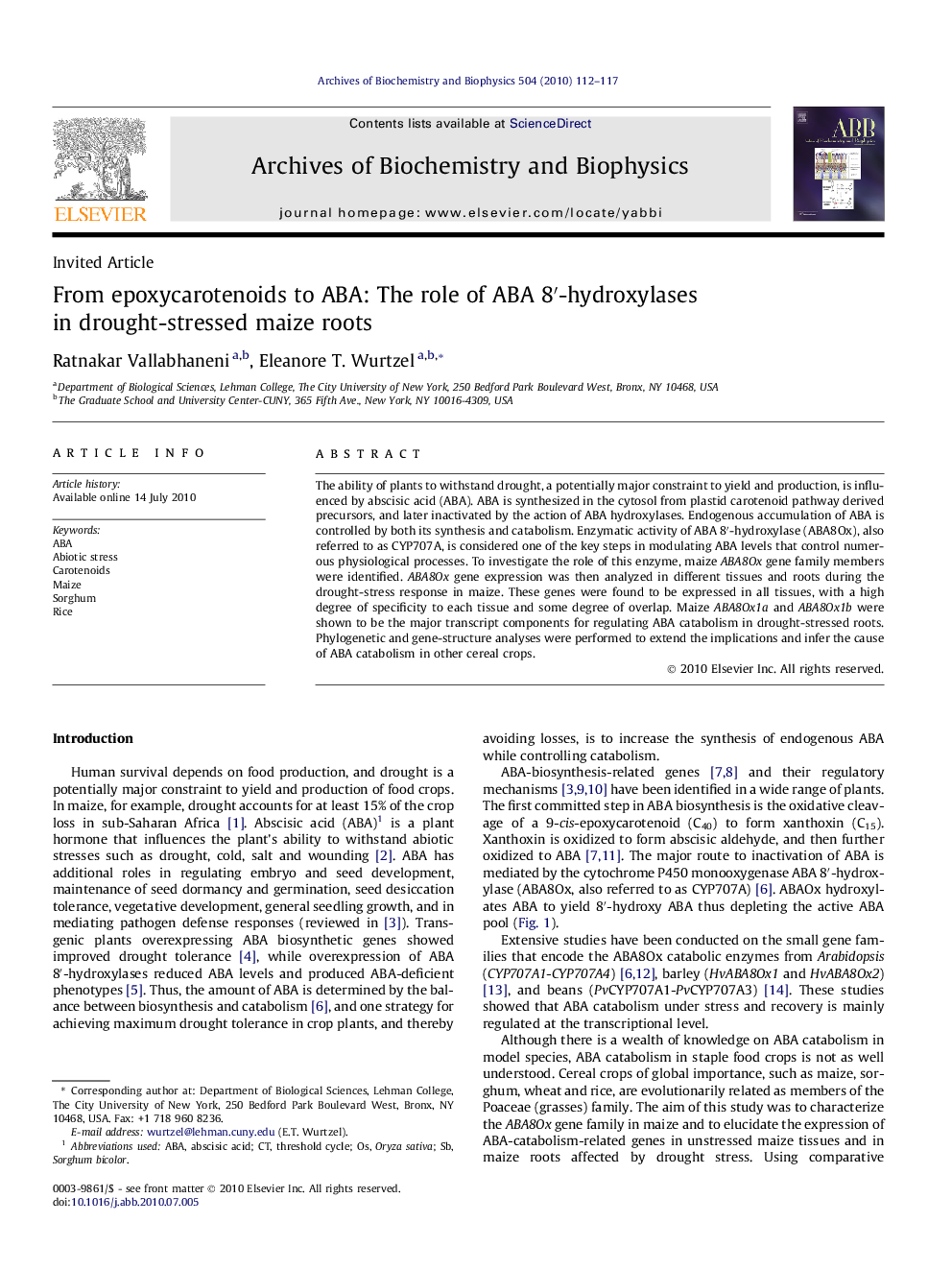| کد مقاله | کد نشریه | سال انتشار | مقاله انگلیسی | نسخه تمام متن |
|---|---|---|---|---|
| 1925879 | 1536424 | 2010 | 6 صفحه PDF | دانلود رایگان |

The ability of plants to withstand drought, a potentially major constraint to yield and production, is influenced by abscisic acid (ABA). ABA is synthesized in the cytosol from plastid carotenoid pathway derived precursors, and later inactivated by the action of ABA hydroxylases. Endogenous accumulation of ABA is controlled by both its synthesis and catabolism. Enzymatic activity of ABA 8′-hydroxylase (ABA8Ox), also referred to as CYP707A, is considered one of the key steps in modulating ABA levels that control numerous physiological processes. To investigate the role of this enzyme, maize ABA8Ox gene family members were identified. ABA8Ox gene expression was then analyzed in different tissues and roots during the drought-stress response in maize. These genes were found to be expressed in all tissues, with a high degree of specificity to each tissue and some degree of overlap. Maize ABA8Ox1a and ABA8Ox1b were shown to be the major transcript components for regulating ABA catabolism in drought-stressed roots. Phylogenetic and gene-structure analyses were performed to extend the implications and infer the cause of ABA catabolism in other cereal crops.
Research highlights
► Abscisic Acid (ABA) 8′-hydroxylases, P450 enzymes (CYP707A) controlling levels of ABA, are encoded by a small gene family in maize and other grasses.
► Five maize genes, three genes in sorghum, and three genes in rice group into three major clades.
► Two gene family members encoding ABA 8′-hydroxylase were the major contributors for regulating ABA catabolism and hence ABA pools in drought-stressed roots of maize.
Journal: Archives of Biochemistry and Biophysics - Volume 504, Issue 1, 1 December 2010, Pages 112–117